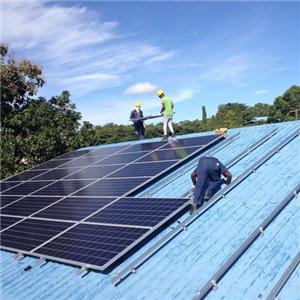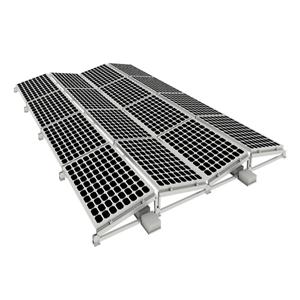India set to add almost 60 GW of new solar by 2023
A combination of national, state and public body commitments could see the amount of PV added nationally treble on the last four-year period. But even with a new 7-8 GW added, rooftop solar will still be bringing up the rear.
India could add 56-58 GW of solar capacity in the next four years, domestic ratings agency CRISIL said in a report published on Friday. The expected capacity addition would be an almost 300% jump from the 20 GW added in the 2014-18 fiscal period.
The ramp-up will be driven by capacities allocated and tendered under the National Solar Mission, state solar policies and other schemes driven by the Solar Energy Corporation of India (SECI) and public sector undertakings, the report stated.
The prospects for rooftop PV continue to be bleak, however. CRISIL predicts that even though 7-8 GW will be added in the rooftop segment from 2019-23, the pace of growth for the sector is going to fall behind the overall target set for it.
Delving into the impact of the 25% safeguard duty imposed by the federal government – and temporarily stayed by the Odisha High Court – CRISIL said the tariff will lead to a 15-20% rise in capital costs, which will result in an INR0.30-0.40 ($0.0042-0.0057) per unit impact on bids to maintain the same rates of return.
“There will be some delay in project implementation on account of the duty, as the ‘change in law’ clause is expected to be sought for [the equivalent of around] 12 GW of under-construction projects,” the report stated.
Safeguarding duty may be offset by falling prices
“Logically, domestic module manufacturers would become the main suppliers to solar developers in India. However their supply capacities are far short of the annual demand of the sector. Hence we expect a rise in capital costs over the near term due to the duty. Additionally, in light of falling module prices, the impact of the duty remains to be seen.”
Central government allocations under the National Solar Mission’s Phase II, Batches III and IV have around 4.7 GW under implementation and another 150 MW in the tendering phase, as of July. SECI has already allocated 5 GW and has another 3 GW at the tendering phase.
States have also come out with aggressive targets to be achieved by 2022 under their respective solar policies. While 7.3 GW is under construction – based on already allocated schemes – another 1.7 GW is expected to be tendered and allocated in the next fiscal year.
The government is encouraging cash-rich public sector undertakings to set up renewable energy projects. The National Thermal Power Corporation has already commissioned more than 880 MW of capacity and has tendered or allocated another 2.75 GW. Similarly, Indian Railways has committed to 5 GW of solar power by 2025.




